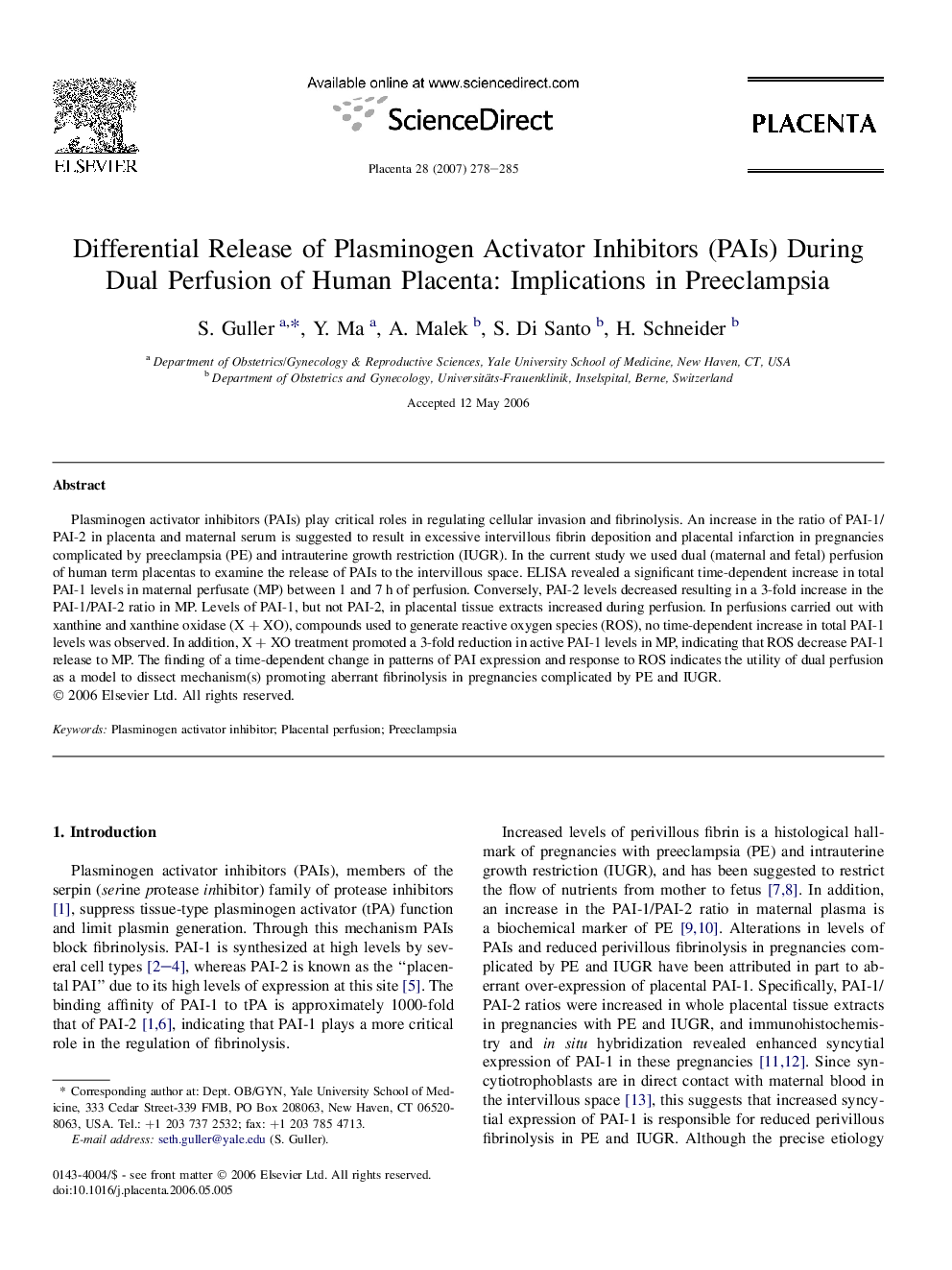| Article ID | Journal | Published Year | Pages | File Type |
|---|---|---|---|---|
| 2790120 | Placenta | 2007 | 8 Pages |
Abstract
Plasminogen activator inhibitors (PAIs) play critical roles in regulating cellular invasion and fibrinolysis. An increase in the ratio of PAI-1/PAI-2 in placenta and maternal serum is suggested to result in excessive intervillous fibrin deposition and placental infarction in pregnancies complicated by preeclampsia (PE) and intrauterine growth restriction (IUGR). In the current study we used dual (maternal and fetal) perfusion of human term placentas to examine the release of PAIs to the intervillous space. ELISA revealed a significant time-dependent increase in total PAI-1 levels in maternal perfusate (MP) between 1 and 7Â h of perfusion. Conversely, PAI-2 levels decreased resulting in a 3-fold increase in the PAI-1/PAI-2 ratio in MP. Levels of PAI-1, but not PAI-2, in placental tissue extracts increased during perfusion. In perfusions carried out with xanthine and xanthine oxidase (XÂ +Â XO), compounds used to generate reactive oxygen species (ROS), no time-dependent increase in total PAI-1 levels was observed. In addition, XÂ +Â XO treatment promoted a 3-fold reduction in active PAI-1 levels in MP, indicating that ROS decrease PAI-1 release to MP. The finding of a time-dependent change in patterns of PAI expression and response to ROS indicates the utility of dual perfusion as a model to dissect mechanism(s) promoting aberrant fibrinolysis in pregnancies complicated by PE and IUGR.
Related Topics
Life Sciences
Biochemistry, Genetics and Molecular Biology
Developmental Biology
Authors
S. Guller, Y. Ma, A. Malek, S. Di Santo, H. Schneider,
